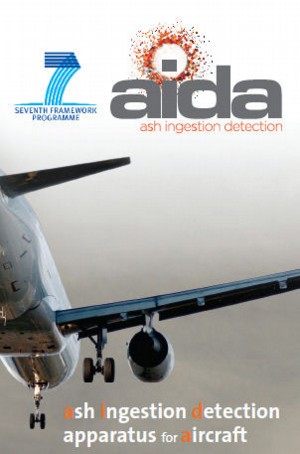Greenbank's R&D is Flying High

Project AIDA will deliver an advanced detection technology which will give real time information on the air quality in the airspace the aircraft will pass. The data can be used to guide maintenance which can reduce failures and reduce false alarms from fire monitoring equipment. It will inform the pilots whether they are flying through high concentrations of dust enabling them to take mitigating actions.
The AIDA project aims to provide an advanced airborne volcanic ash detection apparatus which will make use of special machine vision interrogation of volcanic ash (tephra) and novel image analysis software. The integrated retrofittable system will examine air in the aircraft’s ventilation ducts. By interrogating foreign bodies in the fresh air entering the cabin and identifying the type, size and number of particles per unit time and inferring the presence of low level ash particles in the possible presence of other solids in the air e.g. sand etc an early warning may be conveyed to the crew whence appropriate action may be taken to reduce the exposure of the aircraft, thus making possible enormous savings on maintenance costs.
The aviation sector is a growth market and as passenger and aircraft numbers increase, airspace will become increasingly congested. Volcanic activity is a regularly occurring natural event which generates ash clouds that can cover vast areas. These impacts on the safety of aircraft that are required to fly through or near these clouds.
The aim of project AIDA is to develop a self-contained detection and characterization system for real-time measurement of airborne volcanic ash concentration. This will provide pilots and aircraft operators with the required information to ensure safe operation in potentially hazardous environments and to minimise ash damage which in turn keeps downtime and maintenance costs down.
Aircraft frequently encounter volcanic ash when airborne. In the aftermath of these encounters, virtually the entire fuselage of an aircraft can be contaminated with ash, necessitating a thorough cleaning of the cockpit, instrument panel, circuit breaker panels, passenger and baggage compartments. The electrical and avionics units can be so heavily contaminated that complete replacement is necessary, mainly due to the possibility that all the units could have suffered from overheating. The ash also contaminates the cargo-hold fire-warning system and can generate nuisance fire warnings which are due to the volcanic ash in the air rather than smoke from a fire.
The AIDA project aims to provide an advanced airborne volcanic ash detection apparatus which will make use of special machine for the interrogation of volcanic ash (tephra) and novel image analysis software. The integrated system can be retrofitted to aircraft and will examine air in the aircraft’s ventilation ducts. By interrogating foreign bodies in the fresh air entering the cabin and identifying the type, size and number of particles per unit time and inferring the presence of low level ash particles in the possible presence of other solids in the air e.g. sand etc an early warning may be conveyed to the crew whence appropriate action may be taken to reduce the exposure of the aircraft, thus making possible enormous savings on maintenance costs.
Back to News
 Project AIDA will deliver an advanced detection technology which will give real time information on the air quality in the airspace the aircraft will pass. The data can be used to guide maintenance which can reduce failures and reduce false alarms from fire monitoring equipment. It will inform the pilots whether they are flying through high concentrations of dust enabling them to take mitigating actions.
Project AIDA will deliver an advanced detection technology which will give real time information on the air quality in the airspace the aircraft will pass. The data can be used to guide maintenance which can reduce failures and reduce false alarms from fire monitoring equipment. It will inform the pilots whether they are flying through high concentrations of dust enabling them to take mitigating actions.



